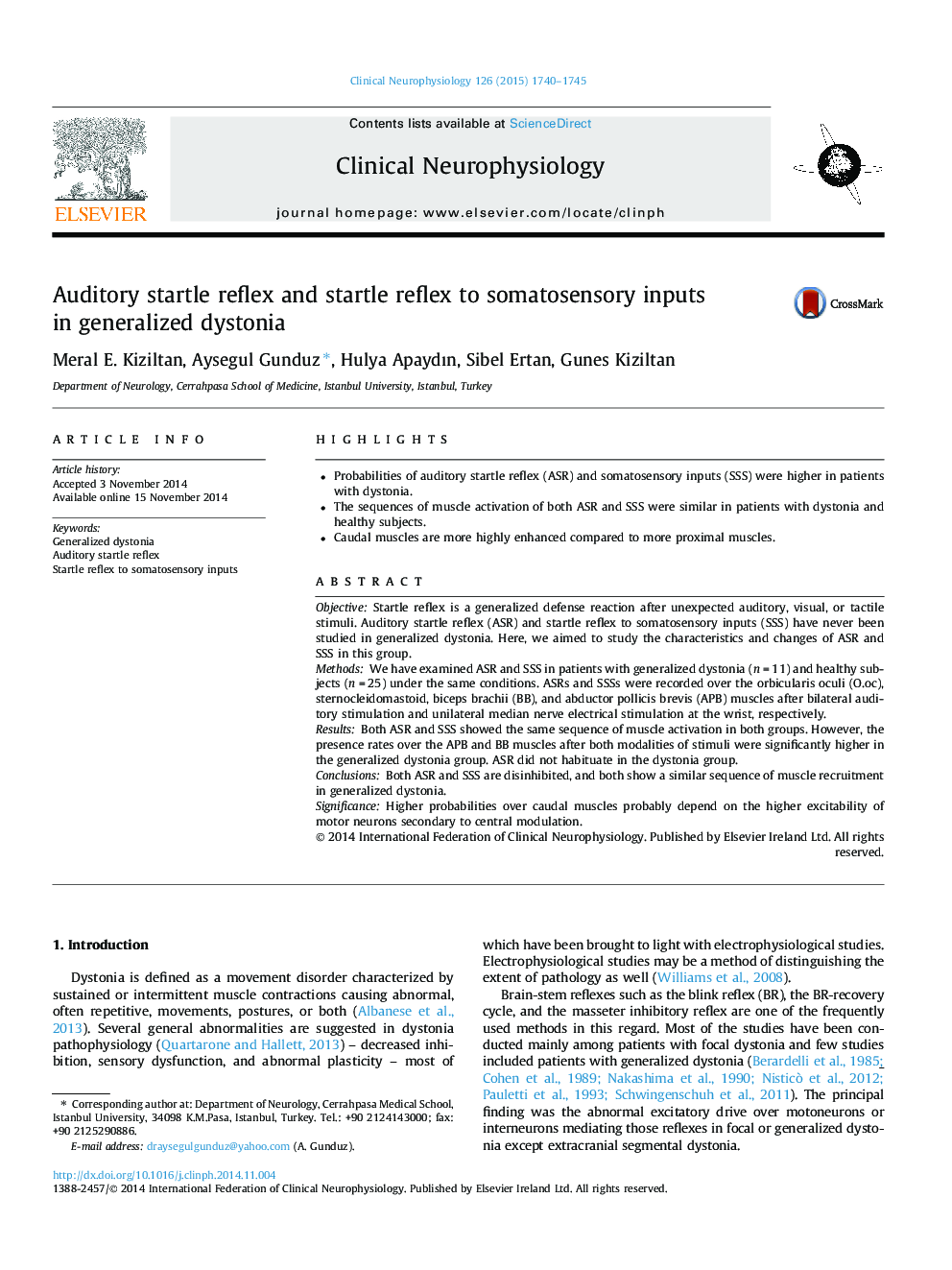| Article ID | Journal | Published Year | Pages | File Type |
|---|---|---|---|---|
| 3042823 | Clinical Neurophysiology | 2015 | 6 Pages |
•Probabilities of auditory startle reflex (ASR) and somatosensory inputs (SSS) were higher in patients with dystonia.•The sequences of muscle activation of both ASR and SSS were similar in patients with dystonia and healthy subjects.•Caudal muscles are more highly enhanced compared to more proximal muscles.
ObjectiveStartle reflex is a generalized defense reaction after unexpected auditory, visual, or tactile stimuli. Auditory startle reflex (ASR) and startle reflex to somatosensory inputs (SSS) have never been studied in generalized dystonia. Here, we aimed to study the characteristics and changes of ASR and SSS in this group.MethodsWe have examined ASR and SSS in patients with generalized dystonia (n = 11) and healthy subjects (n = 25) under the same conditions. ASRs and SSSs were recorded over the orbicularis oculi (O.oc), sternocleidomastoid, biceps brachii (BB), and abductor pollicis brevis (APB) muscles after bilateral auditory stimulation and unilateral median nerve electrical stimulation at the wrist, respectively.ResultsBoth ASR and SSS showed the same sequence of muscle activation in both groups. However, the presence rates over the APB and BB muscles after both modalities of stimuli were significantly higher in the generalized dystonia group. ASR did not habituate in the dystonia group.ConclusionsBoth ASR and SSS are disinhibited, and both show a similar sequence of muscle recruitment in generalized dystonia.SignificanceHigher probabilities over caudal muscles probably depend on the higher excitability of motor neurons secondary to central modulation.
